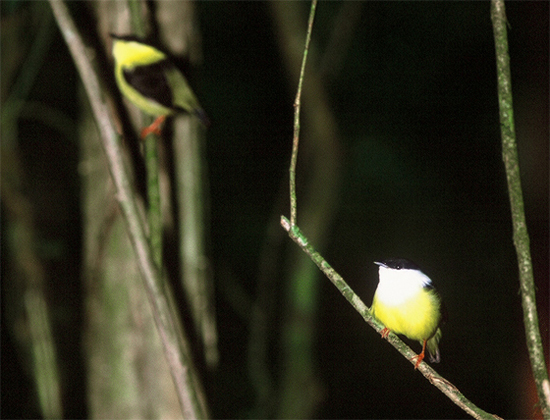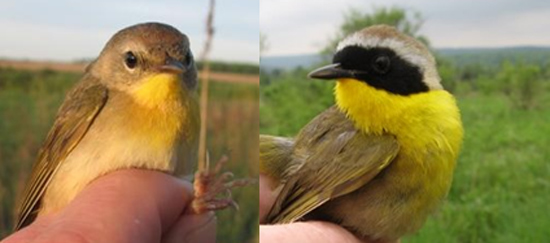
| |
| Home |
| Research |
| Publications |
| People |
| Teaching |
| Field Course |
| Conservation |
| Outreach |
| Adventures |
| Opportunities for students |
| Contact |
RESEARCH PROGRAM |
Research in the Uy Lab aims to elucidate how biological diversity is generated and maintained, with a special focus on understanding the link between mating signal diversification and the evolution of premating reproductive isolation. Divergence in mating signals has been shown to drive speciation yet the underlying genetic changes and ecological mechanisms causing this divergence remain little understood. We use a diverse set of taxa and an integrative approach, which includes molecular phylogenetics, evolutionary genetics, population genomics, microbiology, and behavioral and sensory ecology. Below are several projects that form the foci of research in the Uy Lab. |
PAST PROJECTS Color polymorphism in fish |
Intraspecific, genetic polymorphism provides unique opportunities to understand the origin and maintenance of trait diversity within populations. The live-bearing fish Poecilia parae is unique in having five, sympatric male color forms (see image below): two forms that have carotenoid coloration (red & yellow), one form that has structural coloration (blue), one form with vertical stripes and an elaborate dorsal fin, and a final form that lacks the elaborate traits and resembles females. Using a combination of field and lab experiments, our aim is to understand the persistence of this Y-linked polymorphism. We are currently testing the interaction of several factors including: 1) natural selection against colorful males by cichlid predators, 2) premating sexual selection favoring colorful males, 3) postmating sexual selection favoring cryptic males, and 4) variable visual conditions and sensory physiology selecting for variable male coloration. This work was Jorge Luis-Hurtado Gonzales' dissertation project. |
 |
| Genetically-based color polymorphism in the live-bearer Poecilia parae. |
|
Hybrid zone dynamics in bearded manakins (Manacus spp.). |
Hybrid zones, which are regions where genetically distinct taxa meet and produce hybrids, offer unique opportunities to understand speciation and the consequences of signal diversification. The white-collared (Manacus candei) and golden-collared (M. vitellinus) manakins form a hybrid zone (see image below), characterized by several concordant genetic and morphometric clines, centered in Western Panama. The cline for plumage color, however, is displaced over 50 km into the white population, indicating that the golden plumage is moving into the white population. Our work indicates that the dynamics of this introgression is mediated by sexual selection favoring golden males at the hybrid zone (Stein & Uy 2006), and variable habitats favoring golden plumage at the golden population and the hybrid zone, and white plumage at the white population (Uy & Stein 2007). |
 |
| White-collared (foreground) and golden-collared (background) manakins form mixed leks in Western Panama (see Stein and Uy 2006; Uy and Stein 2007). Photo taken by Kyle Elliot, a field assistant in 2004. |
| Urbanization and the operation of sexual selection in birds |
Recent studies indicate that changes induced by human activities (e.g., deforestation, urban noise) can alter the design of animal signals. However, to date, no study has explored explicitly the biological consequences of these changes. To this end, we are exploring how urban development affects the design of acoustic and visual signals, and how changes in these signals, in turn, influence the operation of sexual selection among populations of the common yellowthroat Geothlypis trichas and Eastern bluebird Silias silias throughout New York. Field work for this project has been completed and formed the basis of Ellen Wisner's dissertation research. |
 |
| A female and male common yellowthroat banded in Central New York. |
| For publications related to our work, please follow the link to Publications from the Uy lab on the left. If you are interested in joining our lab or would like additional information, please contact Al Uy. |
|
|
|